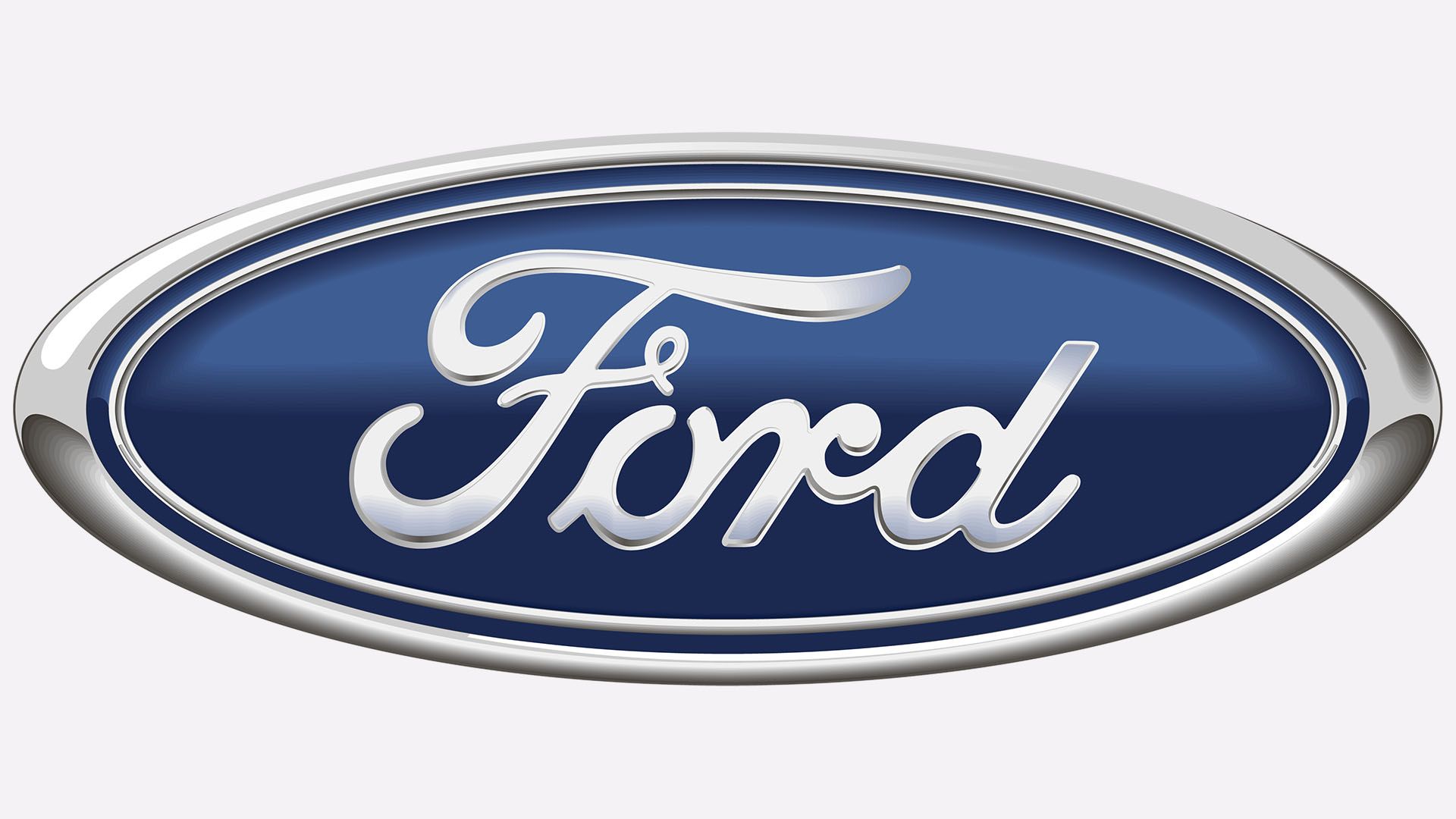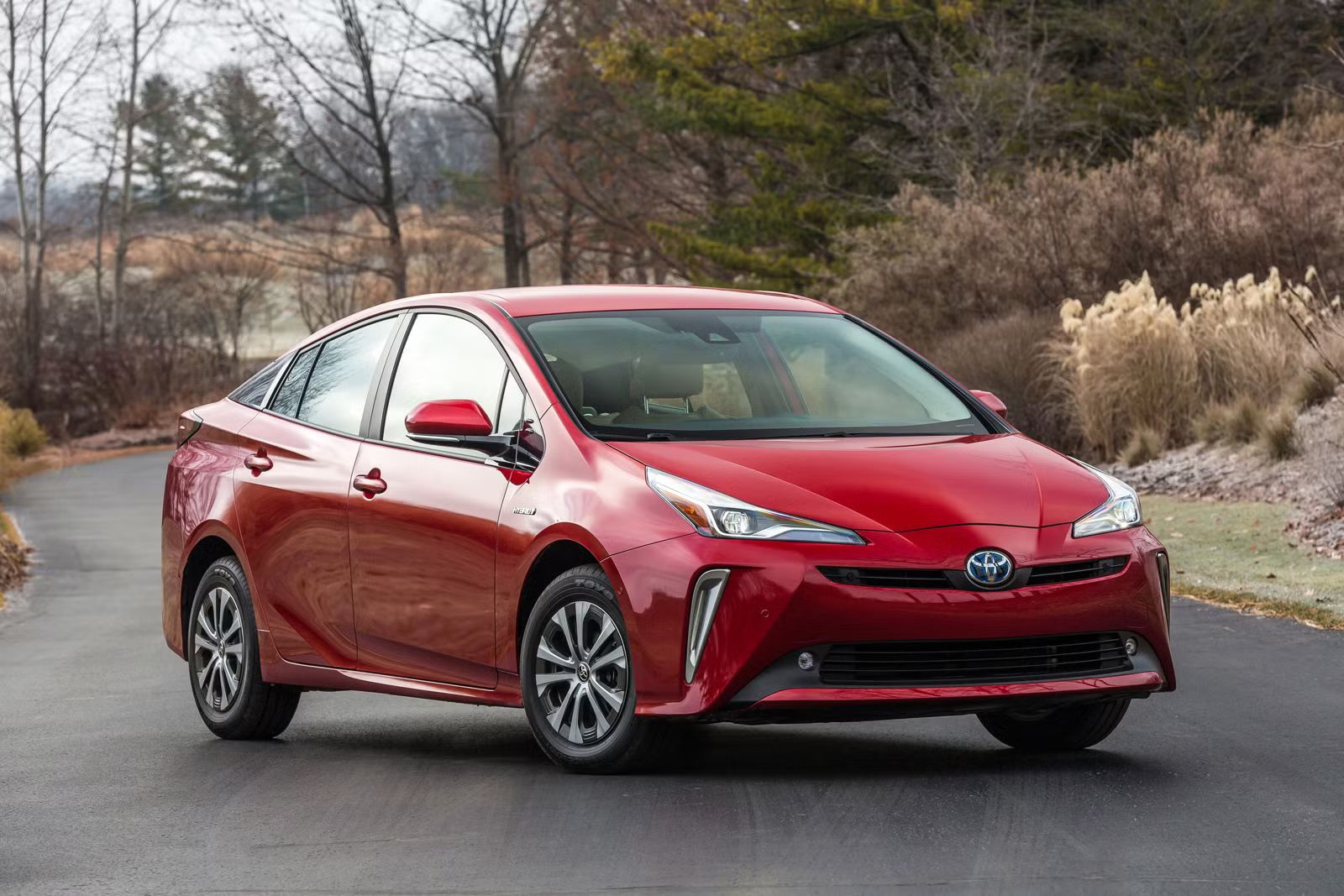
Rekindle the nostalgia of open roads and chrome details as you remember the iconic cars that continue to fuel Baby Boomer dreams decades later. There’s just something about the cars of the 1960s that makes people stop and stare, even decades later. Chrome gleamed brighter, engines roared louder, and every model seemed to have a personality all its own. For Baby Boomers, these cars weren’t just transportation—they were freedom, rebellion, and style on four wheels.
Whether you owned one or just admired from afar, these classics still have the power to make hearts race. The 1960s were an era of incredible automotive innovation and design, a time when vehicles became symbols of freedom, status, and personal style. Modern cars might be reliable, efficient, and better in the long run, but there is something classic and timeless about these dream machines.
Plenty of Baby Boomers will remember the cars made in the 60s as being some of the coolest ones around. Everyone had a dream car, and for many kids, these were theirs. So, buckle up, dreamers! We’re about to take a high-octane trip down memory lane, shining a spotlight on 12 unforgettable rides from the ’60s that still have a firm grip on the hearts and minds of a generation. Let’s hit the open road and see which of these legendary beauties still make your engine roar!
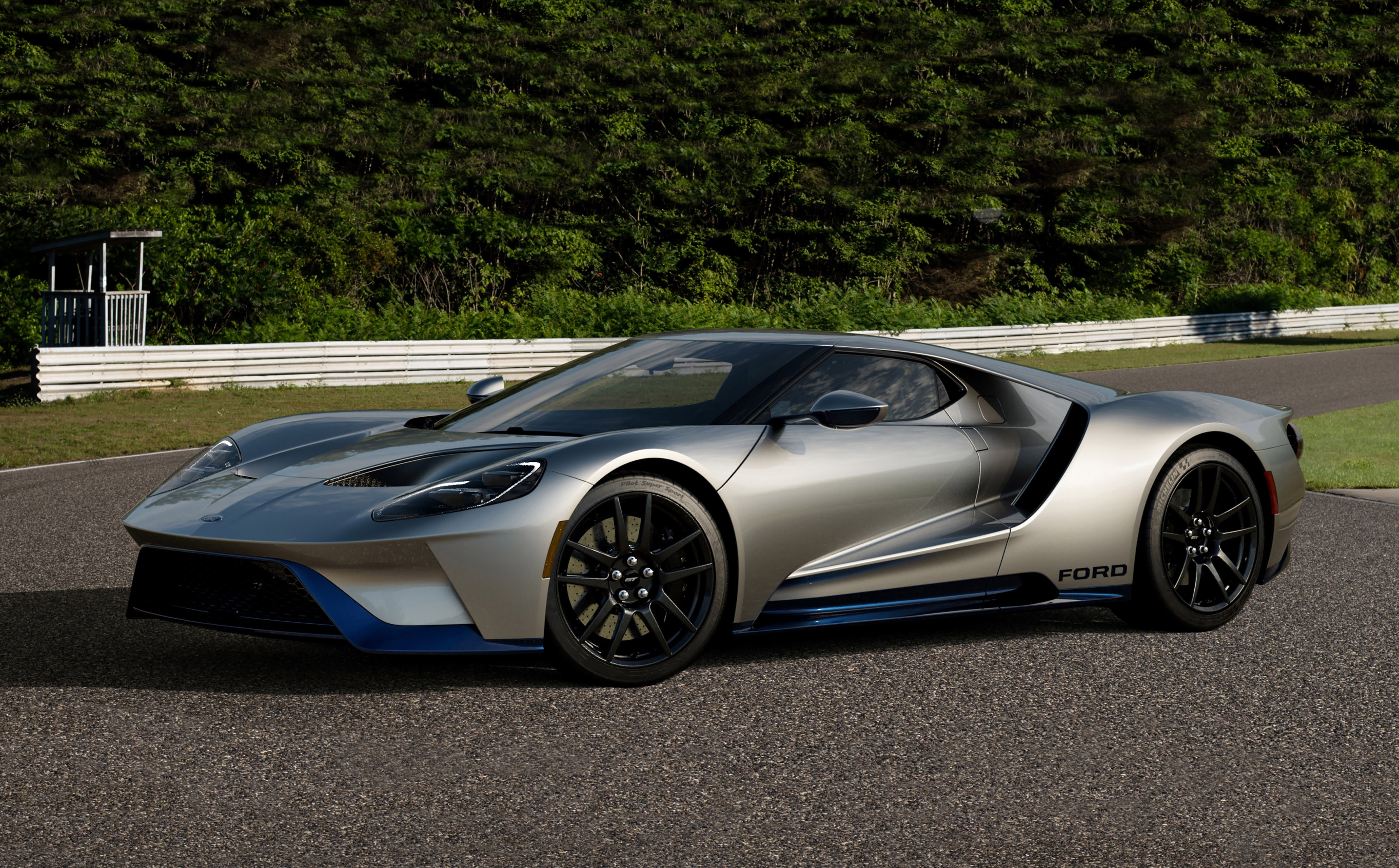
1. **The Ford Mustang: Galloping into History and Hearts**When the Ford Mustang first rolled onto the scene in 1964, it instantly became an icon. It wasn’t just a car; it was a statement, a symbol of youthful excitement and American ingenuity. With its distinctive long hood, short rear deck, and seemingly endless customization options, the Mustang captivated everyone from high schoolers dreaming of their first ride to adults looking to recapture a bit of that youthful spark.
What made the Mustang so universally appealing? Nina R, writing for Wayne Akers Ford, explains its affordability and sporty looks made it incredibly accessible. This meant the dream of owning a cool, fast car was within reach for many, not just the wealthy. It truly democratized the idea of a performance vehicle.
But don’t let its accessibility fool you; the Mustang packed a punch. Its performance options, like the legendary V8, meant it could be as tame or as wild as you wanted. It was the kind of car you could effortlessly cruise down Main Street in, windows down, radio blasting, feeling like the king or queen of the world, commanding attention with every turn.
Even today, classic Mustangs from the ’60s are prized collectibles, coveted by enthusiasts and dreamers alike. Baby Boomers who once drove them—or yearned to—still find themselves daydreaming about the freedom and fun that came with owning this American legend. A million units were gobbled up by young people in April of 1964, all looking for that roar of a pony car with enough power.
Car Model Information: 1966 Ford Mustang Base
Name: Ford Mustang
Caption: 2024 Ford Mustang GT Convertible
Aka: Ford T5 (Germany)
Manufacturer: Ford Motor Company
Production: March 1964 – present
ModelYears: 1965–present
Class: Unbulleted list
BodyStyle: Unbulleted list
Layout: Front-engine, rear-wheel-drive layout
Categories: 1970s cars, 1980s cars, 1990s cars, 2+2 coupés, 2000s cars
Summary: The Ford Mustang is an American automobile manufactured and marketed by Ford since 1964, as Ford’s longest nameplate in continuous production. Currently in its seventh generation, it is the fifth-best selling Ford car nameplate. The namesake of the “pony car” automobile segment, the Mustang was developed as a highly styled line of sporty coupes and convertibles derived from existing model lines, initially distinguished by its pronounced “long hood, short deck” proportions.
Originally predicted to sell 100,000 vehicles yearly, the 1965 Mustang became the most successful vehicle launch since the 1927 Model A. Introduced on April 17, 1964 (16 days after the Plymouth Barracuda), over 400,000 units were sold in its first year; the one-millionth Mustang was sold within two years of its launch. In August 2018, Ford produced the 10-millionth Mustang; matching the first 1965 Mustang, the vehicle was a 2019 Wimbledon White convertible with a V8 engine.
The success of the Mustang launch led to multiple competitors from other American manufacturers, including the Chevrolet Camaro and Pontiac Firebird (1967), AMC Javelin (1968), and Dodge Challenger (1970). It also competed with the Plymouth Barracuda, which was launched around the same time. The Mustang also had an effect on designs of coupes worldwide, leading to the marketing of the Toyota Celica and Ford Capri in the United States (the latter, by Lincoln-Mercury). The Mercury Cougar was launched in 1967 as a unique-bodied higher-trim alternative to the Mustang; during the 1970s, it included more features and was marketed as a personal luxury car.
From 1965 until 2004, the Mustang shared chassis commonality with other Ford model lines, staying rear-wheel-drive throughout its production. From 1965 to 1973, the Mustang was derived from the 1960 Ford Falcon compact. From 1974 until 1978, the Mustang (denoted Mustang II) was a longer-wheelbase version of the Ford Pinto. From 1979 until 2004, the Mustang shared its Fox platform chassis with 14 other Ford vehicles (becoming the final one to use the Fox architecture). Since 2005, Ford has produced two generations of the Mustang, each using a distinct platform unique to the model line.
Through its production, multiple nameplates have been associated with the Ford Mustang series, including GT, Mach 1, Boss 302/429, Cobra (separate from Shelby Cobra), and Bullitt, along with “5.0” fender badging (denoting 4.9 L OHV or 5.0 L DOHC V8 engines).
Get more information about: Ford Mustang
Buying a high-performing used car >>>
Brand: Ford Model: Mustang
Price: $32,991 Mileage: 98,811 mi.

2. **The Chevrolet Corvette Sting Ray: America’s Futuristic Dream Machine**If there’s one car that screams “1960s cool,” it has to be the Chevrolet Corvette Sting Ray. Introduced in 1963, this second-generation Corvette stunned the world with its sleek, futuristic design. Its hidden headlights and distinctive split rear window, at least for that iconic ’63 model year, gave it an otherworldly appearance that immediately set it apart.
But the Corvette was far more than just a pretty face; it was a performance beast. Under its sculpted hood, it packed serious power, with big-block V8s that delivered heart-pounding acceleration that could pin you to your seat. The thrilling roar of its engine was a symphony to any enthusiast’s ears, promising unadulterated speed and excitement with every press of the pedal.
Its handling was equally impressive, thanks to its independent rear suspension—a rarity in American cars at the time. This advanced engineering allowed the Sting Ray to hug corners and navigate winding roads with a precision that rivaled many European sports cars. It transformed every drive into an exhilarating experience, whether on a track or a scenic highway.
For many who grew up during the era, the Sting Ray remains the ultimate fantasy car. Whether you were a dedicated racing enthusiast or just loved the idea of cruising in something that looked like it belonged on a spaceship, the Corvette had universal appeal. Even now, it’s often the car many Boomers would buy if they ever hit the jackpot, a timeless icon of American sports car prowess and design.
Car Model Information: 2022 Honda Civic Sport
Name: Chevrolet Corvette (C2)
Caption: 1963 Chevrolet Corvette Sport Coupe
Manufacturer: Chevrolet
Aka: Chevrolet Corvette Sting Ray
Production: August 1962–July 1967
ModelYears: 1963–1967
Platform: Series 0800 (1962-1964),Series 194 (1965-1967)
Chassis: Body-on-frame
Assembly: St. Louis, Missouri
Predecessor: Chevrolet Corvette (C1)
Successor: Chevrolet Corvette (C3)
Class: Sports car
BodyStyle: Convertible (car),coupé
Layout: Front-engine, rear-wheel-drive layout
Engine: {{cvt,327,cuin,L,1,Chevrolet small-block engine#327,V8 engine
Wheelbase: cvt
Length: cvt
Width: cvt
Height: cvt
Weight: cvt
Transmission: manual transmission,manual transmission,Powerglide
Related: Bill Thomas Cheetah
Designer: Larry Shinoda
Categories: 1960s cars, All articles needing additional references, All articles with specifically marked weasel-worded phrases, All articles with unsourced statements, Articles needing additional references from July 2024
Summary: The Chevrolet Corvette (C2) is the second-generation Corvette sports car, produced by the Chevrolet division of General Motors (GM) for the 1963 through 1967 model years.
Get more information about: Chevrolet Corvette (C2)
Buying a high-performing used car >>>
Brand: Chevrolet Model: Corvette Sting Ray
Price: $25,849 Mileage: 16,061 mi.

3. **The Pontiac GTO: Kicking Off the Muscle Car Mania**The Pontiac GTO is widely credited with launching the entire muscle car era, and it’s easy to see why. When it debuted in 1964, Pontiac took their unassuming Tempest and stuffed a massive V8 engine under its hood. The result was a car as fast as it was incredibly fun to drive, instantly igniting a passion for performance across the nation.
This wasn’t a car for the timid; the GTO boasted a no-nonsense look that hinted at its serious capabilities. With its wide stance and subtle badging, it exuded an understated confidence, letting you know there was immense power lurking beneath its stylish exterior. It was the epitome of cool, without needing to shout about it, a testament to American ingenuity.
The GTO epitomized versatility with a rebellious edge. It was the kind of car you could confidently take to the drag strip on a Saturday night to show off its raw power, and then drive to church on Sunday morning without missing a beat. This dual nature, blending everyday usability with exhilarating performance, made it a legend in its own time, especially among young buyers.
That sense of excitement and capability made the GTO an instant classic. It was affordable enough for young buyers, yet powerful enough to embarrass much pricier European sports cars on the open road. Today, the GTO remains a cherished symbol of American engineering, innovation, and the pure thrill of the open road, forever synonymous with the birth of the muscle car.
Car Model Information: 1966 Pontiac GTO Coupe
Name: Pontiac GTO
Caption: 2005 Pontiac GTO
Manufacturer: Pontiac (automobile),Holden
Class: Mid-size car,Compact car,Mid-size car
Production: 1963–1974,2003–2006
Predecessor: Pontiac Tempest
Layout: Front-engine, rear-wheel-drive layout
ModelYears: 1964-1974 2004-2006
Categories: 1970s cars, 2000s cars, All articles with unsourced statements, Articles with short description, Articles with unsourced statements from October 2008
Summary: The Pontiac GTO is a front-engine, rear-drive, two-door, and four-passenger automobile manufactured and marketed by the Pontiac division of General Motors over four generations from 1963 until 1974 in the United States — with a fifth generation made by GM’s Australian subsidiary, Holden, for the 2004 through 2006 model years.
The first generation of the GTO is credited with popularizing the muscle car market segment in the 1960s. Some consider the Pontiac GTO to have started the trend with all four domestic automakers offering a variety of competing models.
For the 1964 and 1965 model years, the GTO was an optional package on the intermediate-sized Pontiac LeMans. The 1964 GTO vehicle identification number (VIN) started with 22, while the 1965 GTO VIN began with 237. The GTO was designated as a separate Pontiac model from 1966 through 1971 (VIN 242…). It became an optional package again for the 1972 and 1973 intermediate LeMans. For 1974, the GTO was an optional trim package on the compact-sized Ventura.
The GTO model was revived for the 2004 through 2006 model years as a captive import for Pontiac, a left-hand drive version of the Holden Monaro, itself a coupé variant of the Holden Commodore.
Get more information about: Pontiac GTO
Buying a high-performing used car >>>
Brand: Pontiac Model: GTO
Price: $59,991 Mileage: 4,408 mi.

4. **The Dodge Charger: Muscle to the Masses, Style to the Screen**Few cars from the 1960s are as instantly recognizable or deeply etched into popular culture as the Dodge Charger. With its long, sleek lines and imposing, almost predatory presence, the Charger looked like it meant serious business. And with engine options like the legendary 426 Hemi, it delivered on that promise of raw, untamed power.
But the Charger wasn’t solely about straight-line speed or brute force. Its thoughtfully designed, roomy interior and surprisingly comfortable ride made it a practical choice for families who didn’t want to sacrifice performance for practicality. It struck a rare balance, offering both exhilarating speed and everyday usability, a true marvel of automotive engineering for its time.
Thanks to its unforgettable starring roles in numerous movies and TV shows, the Charger transcended its status as merely a car; it became a bona fide pop culture icon. Its aggressive stance and powerful persona made it a beloved character on screen, further cementing its legendary status in the minds of millions, from car enthusiasts to casual viewers.
That unique blend of muscle and comfort is precisely what continues to set the Charger apart, making it an enduring dream car. It’s the kind of vehicle you could realistically drive every day and still feel like an absolute superstar, making every journey an adventure. That dream of powerful, stylish everyday driving is one that never truly fades for Baby Boomers.
Car Model Information: 2022 Dodge Charger GT
Name: Dodge Charger
Caption: 1969 Dodge Charger
Manufacturer: Dodge
Production: 1966–1978,1981–1987,2005–present
ModelYears: 1966–1978,1982–1987,2006–present
Categories: 1960s cars, 1970s cars, 1980s cars, 2000s cars, 2010s cars
Summary: The Dodge Charger is a model of automobile marketed by Dodge in various forms over eight generations since 1966.
The first Charger was a show car in 1964. A 1965 Charger II concept car resembled the 1966 production version.
In the United States, the Charger nameplate has been used on mid-size cars, personal luxury coupes, subcompact hatchbacks, and full-size sedans.
Get more information about: Dodge Charger
Buying a high-performing used car >>>
Brand: Dodge Model: Charger
Price: $24,999 Mileage: 31,799 mi.
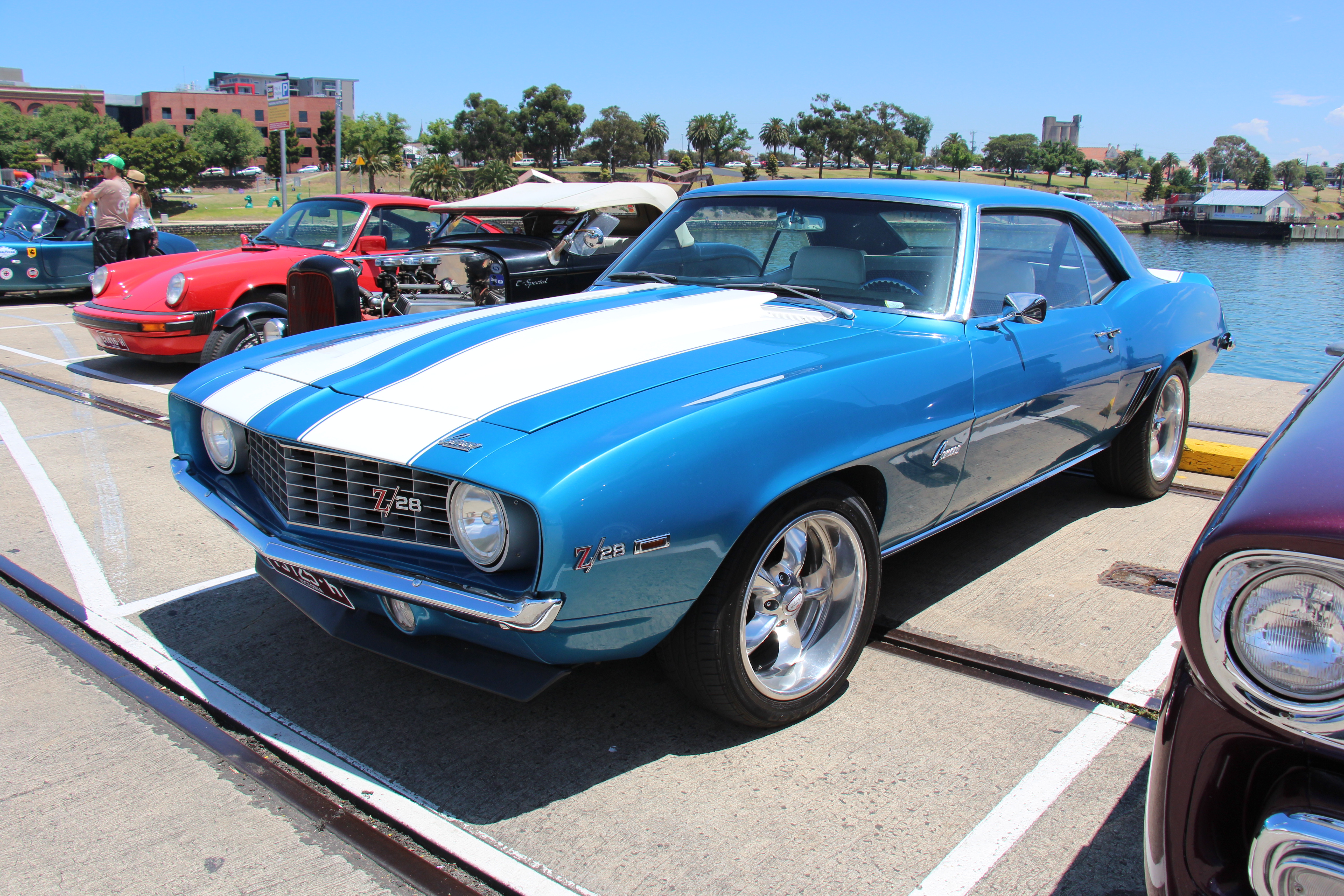
5. **The Chevrolet Camaro: Chevy’s Bold Challenger**The Chevrolet Camaro burst onto the scene in 1967 as Chevy’s direct and aggressive answer to the popular Ford Mustang. It quickly carved out its own distinct identity and built a fiercely loyal following. With aggressive styling and a formidable range of powerful engine options, the Camaro was more than just another “pony car”; it was a true muscle car, ready to dominate on the street or drag strip.
For many Baby Boomers, the Camaro represented pure, unfiltered American performance, embodying the spirit of competition and raw power. Whether you opted for the robust base model or decided to splurge on the exhilarating SS or Z/28 packages, you were guaranteed a car that looked fast even when it was parked. Its sleek lines and powerful stance screamed speed and exhilaration.
The interior was just as sporty, designed to complement the car’s dynamic exterior. Featuring snug bucket seats and a cockpit-like feel, every drive in a Camaro transformed into an exciting adventure. It was a car built for drivers who craved an immersive and engaging experience, making them feel intrinsically connected to the road and the machine.
There’s a good reason why the first-generation Camaro remains a staple at classic car shows and a perennial favorite among collectors. Its unparalleled combination of style, speed, and undeniable attitude makes it a car that Boomers still passionately dream about owning—or, for many lucky ones, owning again. It’s a testament to its timeless design and enduring appeal as an American icon.
Car Model Information: 1968 Chevrolet Camaro
Name: Chevrolet Camaro
Manufacturer: Chevrolet
Production: 1966–2002,2009–2023
ModelYears: 1967–2002,2010–2024
Class: Pony car
BodyStyle: coupe,convertible
Platform: GM F platform,GM Zeta platform,GM Alpha platform
Layout: Front-engine, rear-wheel-drive layout
Categories: 1970s cars, 1980s cars, 1990s cars, 2+2 coupés, 2000s cars
Summary: The Chevrolet Camaro is a mid-size American automobile manufactured by Chevrolet, classified as a pony car. It first went on sale on September 29, 1966, for the 1967 model year and was designed to compete with the Ford Mustang. The Camaro shared its platform and major components with the Firebird, produced by General Motors’ Pontiac division that was also introduced for the 1967 model year.
Four distinct generations of the Camaro were developed before production ended in 2002. The nameplate was revived on a concept car that evolved into the fifth-generation Camaro; production started on March 16, 2009.
Production of the sixth generation of the Camaro ended in December 2023, for the 2024 model year.
Get more information about: Chevrolet Camaro
Buying a high-performing used car >>>
Brand: Chevrolet Model: Camaro
Price: $79,980 Mileage: 1,713 mi.
6. **The Plymouth Barracuda: The Underdog That Became a Legend**The Plymouth Barracuda, often overshadowed by its more famous rivals, holds a special place in the hearts of those in the know as a true ’60s classic. Introduced in 1964, it earned a significant historical footnote: it was the first of the “pony cars,” beating the legendary Mustang to market by a few crucial weeks, a fact emphasized by Mac’s Motor City Garage.
With its instantly recognizable fastback design and the thrilling option of V8 power, the Barracuda was a car that perfectly blended style with impressive speed. It might not have had the same massive marketing muscle as its formidable competitors like the Mustang or Camaro, but it steadily earned a devoted following. This loyal fan base truly appreciated its unique blend of performance and practical usability.
Individualists, those who sought something a little different and less mainstream, naturally gravitated to the Barracuda. It offered a distinctive character that appealed to drivers who preferred to forge their own path. Its unique silhouette and spirited performance allowed owners to stand out from the crowd without ostentation, embodying a quiet confidence.
Today, the Barracuda’s relative rarity only adds to its immense appeal among collectors and dreamers alike. It stands as a powerful testament that you don’t always have to be the most popular or heavily advertised to be truly memorable. The Barracuda proves that genuine character and a pioneering spirit can secure a car’s place in automotive history, solidifying its legend for generations.
Car Model Information: 1971 Plymouth Barracuda
Caption: 1970 Hardtop Coupe
Name: Plymouth Barracuda
Manufacturer: Plymouth (automobile)
Production: 1964–1974
Assembly: Fenton, Missouri,Hamtramck, Michigan,Maywood, California,Windsor, Ontario
Layout: Front-engine, rear-wheel drive layout
Class: Pony car
Categories: 1970s cars, All articles with dead external links, All articles with unsourced statements, Articles with dead external links from February 2018, Articles with dead external links from January 2022
Summary: The Plymouth Barracuda is a two-door pony car that was manufactured by Chrysler Corporation from 1964 through 1974 model years.
The first-generation Barracuda was based on the Chrysler A-body and was offered from 1964 until 1966. A two-door hardtop (no B-pillar) fastback design, it shared a great majority of parts and bodywork with the Plymouth Valiant, except for the distinctive wraparound rear glass.
The second-generation Barracuda, though still Valiant-based, was heavily redesigned. Built from 1967 through 1969, it was available as a two-door in fastback, notchback, and convertible versions.
The third generation, offered from 1970 until 1974, was based on the Chrysler E-body, exclusive to it, and the slightly larger Dodge Challenger. A completely new design, the two-door Barracuda was available in hardtop and convertible body styles.
Get more information about: Plymouth Barracuda
Buying a high-performing used car >>>
Brand: Plymouth Model: Barracuda
Price: $54,999 Mileage: 12,468 mi.

7. **The Cadillac Eldorado: Rolling Royalty, 1960s Style**If you wanted to make a statement in the swinging sixties, the Cadillac Eldorado was your ultimate accessory. This wasn’t just a car; it was a grand declaration of luxury, American style. With its massive tailfins, bold chrome, and unapologetically flashy presence, the Eldorado was the ride you chose when you wanted everyone to know you had truly arrived. It was the epitome of success and a symbol of sophistication on four wheels, turning heads with every majestic roll down the boulevard.
But the Eldorado offered more than just an impressive facade. A Volvo article, believe it or not, highlights that this beauty delivered a sumptuously smooth and comfortable ride, packed with all the cutting-edge features of the era. Imagine power windows that hummed to life with a touch, and air conditioning that kept you cool as a cucumber on those long summer drives. This car was meticulously designed to pamper its occupants, ensuring every single journey felt like an exclusive event, a special occasion worthy of remembrance.
Its sheer scale and opulence also solidified the Eldorado’s place in popular culture. It frequently appeared in films and television, often driven by characters of status, further embedding its image as the car of choice for those who had “made it.” This wasn’t a subtle statement; it was a rolling billboard for the American Dream, reflecting the aspirational spirit of a booming post-war generation. It was a car that didn’t just transport you; it elevated your presence and announced your arrival.
For many Baby Boomers, the Eldorado wasn’t just a car they saw on the streets; it was a dream woven into the fabric of their youth. Perhaps your parents or grandparents proudly cruised in one, or maybe you just admired its majestic presence from afar, longing for a taste of that opulent life. Even now, the Eldorado remains a powerful symbol of aspiration and elegance, a timeless dream car for anyone who truly appreciates the finer things in the automotive world, a classic that never loses its sparkle.
Car Model Information: 1976 Cadillac Eldorado Convertible
Caption: 1963 Cadillac Eldorado Convertible
Name: Cadillac Eldorado
Manufacturer: Cadillac
Production: 1952–2002
Layout: Front-engine, rear-wheel-drive layout
Aka: Cadillac Fleetwood Eldorado
Class: Personal luxury car
Successor: Cadillac CTS
Categories: 1960s cars, 1970s cars, 1980s cars, 1990s cars, 2000s cars
Summary: The Cadillac Eldorado is a luxury car manufactured and marketed by the Cadillac Motor Car Division of General Motors from 1952 until 2002, over twelve generations.
The Eldorado was at or near the top of the Cadillac product line. The original 1953 Eldorado convertible and the Eldorado Brougham models of 1957–1960 had distinct bodyshells and were the most expensive models offered by Cadillac during those years. The Eldorado was never less than second in price after the Cadillac Series 75 limousine until 1966. Beginning in 1967, the Eldorado retained its premium position in the Cadillac price structure, but was manufactured in high volumes on a unique, two-door personal luxury car platform.
The Eldorado carried the Fleetwood designation from 1965 through 1972, and was seen as a modern revival of the pre-war Cadillac V-12 and Cadillac V-16 roadsters and convertibles.
Get more information about: Cadillac Eldorado
Buying a high-performing used car >>>
Brand: Cadillac Model: Eldorado
Price: $29,499 Mileage: 31,898 mi.
Read more about: 12 Classic Boomer Cars Millennials Avoid: The Hidden Factors Behind Younger Generations’ Disinterest

8. **The Shelby Cobra: Untamed Power, Unforgettable Legend**Few cars from the ’60s possess the sheer mystique and raw power of the Shelby Cobra. This wasn’t just a car; it was a beast unleashed by the legendary Carroll Shelby, a fearless creation that combined a lightweight British AC body with a monstrous American V8 engine. The result? A vehicle that was as breathtakingly fast as it was utterly fearsome, looking like it had roared right out of the pages of a comic book with its bulging fenders and impossibly wide, aggressive tires. It was the definition of a street-legal racer, commanding respect with every growl.
Getting behind the wheel of a Cobra was, and still is, an experience in itself. Forget about creature comforts or quiet commutes; this car was built for pure, unadulterated excitement. As mentioned in a Cobra Experience writeup, with minimal insulation and a raw, unfiltered feel for the road, it certainly wasn’t for the faint of heart. Yet, for those who truly craved blistering speed and an adrenaline rush like no other, nothing else on the planet could even come close. The deafening roar of its engine wasn’t just noise; it was a symphony that promised untamed power and an immediate thrill that surged through your veins.
The Cobra’s aggressive aesthetics and track-proven performance made it an immediate icon. It wasn’t just fast; it was a winner, dominating racetracks and humbling much larger, more established sports car manufacturers. This racing pedigree, combined with its audacious styling, gave the Cobra an almost mythical status. It represented the ultimate expression of American hot-rod ingenuity merged with European lightweight chassis design, creating a machine that captured imaginations worldwide.
It’s no wonder the Shelby Cobra quickly became the ultimate “if I won the lottery” car for generations of dreamers. They were incredibly rare, notoriously expensive, and fantastically desirable – everything a truly iconic dream car should be. Even today, pristine original Cobras fetch astronomical prices, and even high-quality replicas command immediate attention and admiration. The legend of the Cobra only continues to grow with each passing year, cementing its place as one of the most revered and aspirational machines in automotive history, a testament to its enduring legacy of raw, unbridled performance.
Read more about: 14 Ford Muscle Car Legends: The Collectible Beasts You Need to Drive (If You Can Find One)
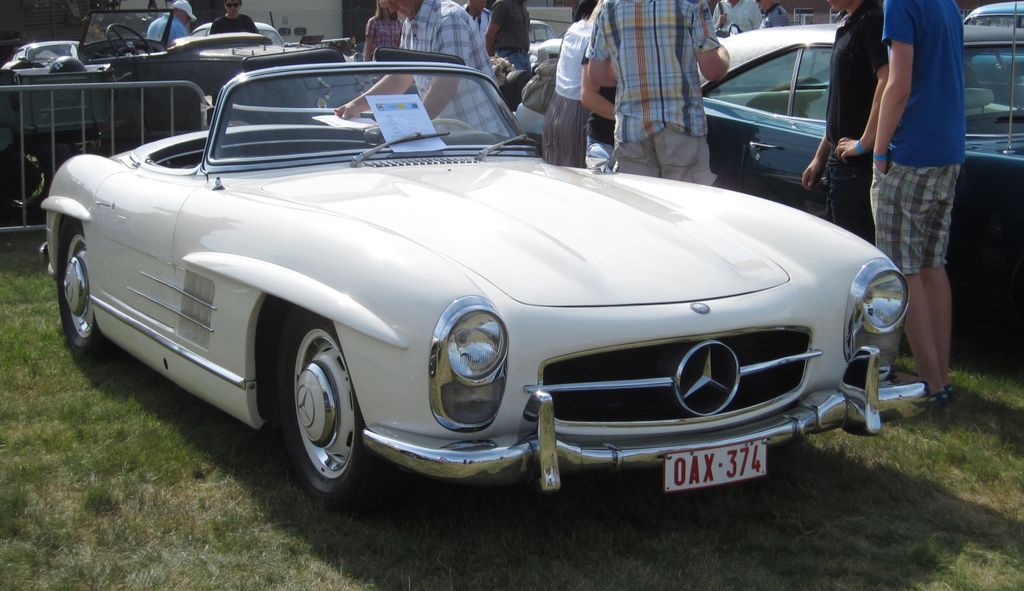
9. **The Mercedes-Benz 280 SL: European Elegance, Open-Air Dreams**For Baby Boomers seeking a touch of sophisticated European refinement mixed with open-air exhilaration, the Mercedes-Benz 280 SL was the answer. Affectionately nicknamed the “Pagoda” for its unique, slightly concave hardtop roofline, this two-seater convertible was a masterclass in blending impeccable style, sumptuous comfort, and impressive performance in perfect harmony. It brought a sense of continental flair and understated luxury to American roads, proving that power didn’t always have to roar quite so loudly.
Underneath its elegant exterior, the 280 SL was a joy to drive. Its smooth six-cylinder engine provided ample power for effortless cruising, while its precise handling made it a delight whether you were navigating bustling city streets or carving through scenic country roads. The interior was a sanctuary of refined taste: understated yet undeniably elegant, with just enough luxurious touches to elevate every single drive into a truly special occasion. It wasn’t about flash; it was about an inherent sense of quality and a sublime driving experience.
Those who truly appreciate the finer nuances of life, who understand that a car can be both a practical machine and an object of beauty, often find themselves perpetually drawn to the allure of the 280 SL. As highlighted by Robb Report, this is truly a dream car for anyone who firmly believes that driving should always be an experience to be savored, an escape from the mundane, and never just a simple commute. It’s a timeless testament to German engineering and a symbol of elegant motoring that continues to captivate.
Car Model Information: 2022 Honda Civic Sport
Name: Mercedes-Benz SL-Class
Caption: Mercedes-Benz SL-Class (R231)
Manufacturer: ubl
Aka: Mercedes-AMG SL-Class (R232)
Production: 1954–present
Assembly: ubl
Class: Sports car
BodyStyle: ubl
Layout: ubl
Predecessor: ubl
Categories: 1960s cars, 1970s cars, 1980s cars, 1990s cars, 2000s cars
Summary: The Mercedes-Benz SL-Class (marketed as Mercedes-AMG SL since 2022) is a grand touring sports car manufactured by Mercedes-Benz since 1954. The designation “SL” derives from the German term “Sport-Leicht”, which translates to “Sport Light” in English.
Initially, the first 300 SL was a racing sports car built in 1952
with no intention of developing a street version. In 1954, an American importer Max Hoffman suggested the street version of 300 SL for the wealthy performance car enthusiasts in the United States where the market for the personal luxury car was booming after the Second World War.
Get more information about: Mercedes-Benz SL-Class
Buying a high-performing used car >>>
Brand: Mercedes-Benz Model: 280 SL
Price: $25,849 Mileage: 16,061 mi.
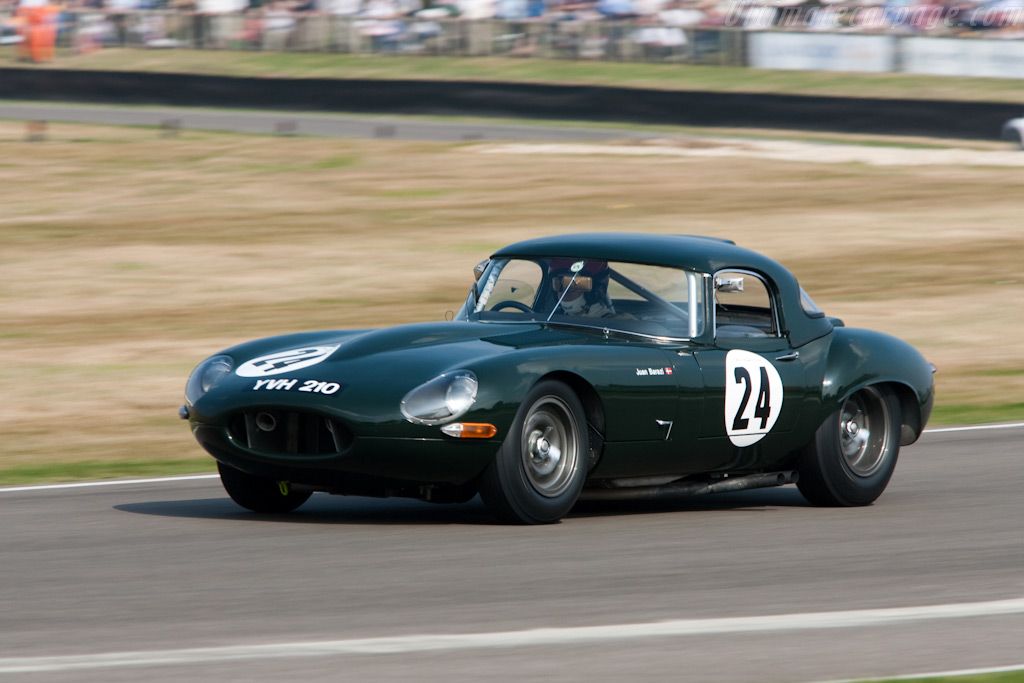
10. **The Jaguar E-Type: A Masterpiece on Wheels**Prepare to have your breath taken away, because the Jaguar E-Type wasn’t just a British sports car; it was, and still is, an undeniable work of automotive art. When this marvel debuted in 1961, it reportedly moved none other than Enzo Ferrari himself to declare it “the most beautiful car ever made.” And honestly, who could argue? With its impossibly long hood, sensuously sleek curves, and a low-slung profile that hinted at incredible speed, the E-Type looked utterly fast even when it was standing perfectly still, a sculpture of motion.
But this beauty was far from skin-deep; the E-Type’s performance was every bit as impressive as its breathtaking looks. Its powerful inline-six engine delivered exhilarating speed, making every acceleration a thrill. Moreover, its handling was genuinely ahead of its time, providing a level of precision and responsiveness that drivers of the era could only dream of. As ECD Automotive Design highlights, it was the kind of car you could take to the track, dominating the competition, or simply enjoy on a leisurely cruise along a winding country road, savoring every moment behind the wheel.
The E-Type quickly transcended its role as a mere vehicle to become a cultural icon, epitomizing British cool and sophisticated flair. It graced the driveways of celebrities, appeared in films, and was the ultimate symbol of stylish living for the swinging sixties. Its blend of high performance and exquisite design made it a desirable object for anyone who valued both exhilaration and elegance, cementing its status as a timeless classic cherished by enthusiasts across the globe.
The arrival of the E-Type on American streets brought with it an irresistible touch of European glamour and sophistication. It was exotic, it was elegant, and it possessed an alluring hint of mystery – embodying everything a young, restless Baby Boomer could possibly desire in a dream car. For those who grew up in the 60s, it represented freedom, adventure, and an unparalleled statement of style that continues to turn heads and ignite passions decades later.
Car Model Information: 1971 Jaguar E-Type Restomod
Sp: uk
Name: Jaguar E-Type
Caption: 1961 E-Type Series 1 3.8-Litre, the first production model of this open two-seater
Aka: Jaguar XK-E , Jaguar V-12
Manufacturer: Jaguar Cars
Production: 1961–1974
Class: Sports car
Predecessor: Jaguar XK150
Related: Jaguar D-Type,Jaguar XJ13
Successor: Jaguar XJS
Layout: FMR layout
Assembly: Coventry,England
Designer: Malcolm Sayer
Categories: 1970s cars, 2+2 coupés, All articles with dead external links, All articles with specifically marked weasel-worded phrases, All articles with unsourced statements
Summary: The Jaguar E-Type, or the Jaguar XK-E for the North American market, is a British front mid-engined sports car that was manufactured by Jaguar Cars Ltd from 1961 to 1974. Its sleek appearance, advanced technologies, high performance, and competitive pricing established it as an icon. The E-Type’s claimed 150 miles per hour (240 km/h) top speed, sub-7-second 0 to 60 mph (97 km/h) acceleration, largely unitary body construction, front and rear independent suspension with disc brakes, mounted inboard at the rear, and rack-and-pinion steering spurred industry-wide changes.
The E-Type was based on Jaguar’s D-Type racing car, which had won the 24 Hours of Le Mans for three consecutive years beginning in 1955.
The E-Type employed what was, for the early 1960s, a novel design principle, with a front subframe carrying the engine, front suspension and front bodywork bolted directly to the body tub. No ladder frame chassis, as was common at the time, was needed and as such the first cars weighed only 1,315 kg (2,899 lb).
It is rumored that, on its debut on 15 March 1961, Enzo Ferrari called it “the most beautiful car ever made”, but this statement is not fully confirmed. In 2004, Sports Car International magazine placed the E-Type at number one on their list of Top Sports Cars of the 1960s. In March 2008, the Jaguar E-Type ranked first in The Daily Telegraph’s online list of the world’s “100 most beautiful cars” of all time.
Get more information about: Jaguar E-Type
Buying a high-performing used car >>>
Brand: Jaguar Model: E-Type
Price: $64,900 Mileage: 2,455 mi.
Read more about: Beyond Bond: Sean Connery’s Iconic Automotive Legacy – A Deep Dive into the Classic Cars He Made Famous
11. **The Volkswagen Beetle: The Quirky Icon That Stole Hearts**Hold onto your flower power, because not every dream car from the vibrant 1960s had to be a fire-breathing muscle-bound powerhouse. The humble, yet undeniably charming, Volkswagen Beetle captured the hearts of millions with its utterly quirky looks, rock-solid reliability, and an undeniable personality all its own. This was the car of the people, the car you learned to drive in, the trusty steed for countless road trips, and perhaps even the canvas for vibrant flower-power paint jobs during the legendary Summer of Love. It was a cultural phenomenon in its own right.
The Beetle’s ingenious and simple design made it incredibly affordable for families and remarkably easy to maintain, a stark contrast to some of its more complex, high-performance counterparts. But its true magic lay in its distinctive character. Whether you adored its instantly recognizable, air-cooled engine sound, or the way its rounded silhouette seemed to “smile” at you from every angle, the Beetle quickly transcended its role as mere transportation. It became more than just a car; it evolved into a beloved member of the family, a trusty companion for life’s adventures.
The potent nostalgia for the Volkswagen Beetle runs far deeper than mere horsepower or top speed figures. It’s a yearning for a simpler time, a symbol of youthful freedom, budding friendships, and the endless possibilities of the open road – all without the need for ostentatious speed or flashy chrome. Even today, catching sight of a classic “Bug” on the highway instantly conjures up cherished memories of bygone days, of carefree moments and a world brimming with untold adventures. It’s a reminder that true charm never goes out of style.
Car Model Information: 1969 Volkswagen Beetle (Pre-1980) Base
Sp: uk
Name: Volkswagen Type 1,”Beetle”
Caption: 1965–1966 Volkswagen Käfer
Manufacturer: Volkswagen
Alt: A front-three quarters view of a pale-yellow Volkswagen Käfer. It features 165/80R15 tires, which shod 15×4. 5″ silver, circular wheels. The Käfer features a beetle-like body, and its window is open. The picture is taken with much greenery in the background, and the photo was edited to give it a more warmer tone.
Aka: List of names for the Volkswagen Type 1
Assembly: #Markets and assembly
Designer: Ferdinand Porsche
Class: Small family car
BodyStyle: Sedan (automobile),convertible
Production: 1938–2003,21,529,464 produced
Successor: Volkswagen Golf Mk1,Volkswagen Gol#First generation (Typ30, 1980),Volkswagen New Beetle
Layout: Rear-engine, rear-wheel-drive layout
Engine: Petrol,Volkswagen air-cooled engine,1192 cc H4,1285 cc H4,1493 cc H4,1584 cc H4
Transmission: manual transmission,Saxomat,Autostick
Wheelbase: convert
Length: convert
Width: convert
Height: 1500 mm
Abbr: on
Weight: convert
Categories: 1940s cars, 1950s cars, 1960s cars, 1970s cars, 1980s cars
Summary: The Volkswagen Beetle, officially the Volkswagen Type 1, is a small family car produced by the German company Volkswagen from 1938 to 2003. A global cultural icon known for its bug-like design, the Beetle is widely regarded as one of the most influential cars of the 20th century. Its production period of 65 years is the longest for any single generation of automobile, and its total production of 21.5 million units makes it the most produced car of a single platform in history and the second-highest of all nameplates manufactured in the 20th century.
The Beetle was conceived in the early 1930s. The leader of Nazi Germany, Adolf Hitler, decided there was a need for a people’s car—an inexpensive, simple, mass-produced car—to serve Germany’s new road network, the Reichsautobahn. The German engineer Ferdinand Porsche and his design team began developing and designing the car in the early 1930s, but the fundamental design concept can be attributed to Béla Barényi in 1925, predating Porsche’s claims by almost ten years. The result was the Volkswagen Type 1 and the introduction of the Volkswagen brand. Volkswagen initially slated production for the late 1930s, but the outbreak of war in 1939 meant that production was delayed until the war had ended. The car was originally called the Volkswagen Type 1 and marketed simply as the Volkswagen. It was not until 1968 that it was officially named the “Beetle”.
Volkswagen implemented designations for the Beetle in the 1960s, including 1200, 1300, 1500, 1600, 1302, and 1303. Volkswagen introduced a series of large luxury models throughout the 1960s and 1970s—comprising the Type 3, Type 4 and K70—to supplement the Beetle, but none of these models achieved the level of success that it did. In 1972, it became the best-selling car of all time, a position it retained for nearly three decades. Rapidly changing consumer preferences toward front-wheel drive compact hatchbacks in Europe prompted Volkswagen’s gradual shift away from rear-wheel drive, starting with the Golf in 1974. In the late 1970s and ’80s, Japanese automakers dominated some markets around the world, which contributed to the Beetle’s declining popularity.
The Beetle remains one of the best-selling cars of all time and is the first to sell over 20 million units. Over its lifespan, its design remained consistent, yet Volkswagen implemented over 78,000 incremental updates. These modifications were often subtle, involving minor alterations to its exterior, interior, colours, and lighting. Some more noteworthy changes included the introduction of new engines, models and systems, such as improved technology or comfort. The Beetle maintains a substantial cultural influence and is regarded as one of the most iconic vehicles in automotive history; its success largely influenced the way automobiles are designed and marketed, and propelled Volkswagen’s introduction of a Golf-based series of vehicles.
Get more information about: Volkswagen Beetle
Buying a high-performing used car >>>
Brand: Volkswagen Model: Beetle
Price: $39,950 Mileage: 43,823 mi.

12. **The Pontiac Firebird Trans Am: Flying High with Muscle and Style**As the 1960s roared towards its conclusion, another legend emerged from the Pontiac stables, ready to take flight: the iconic Firebird Trans Am. Designed explicitly to go head-to-head with rivals like the Ford Mustang and the Chevrolet Camaro for muscle car supremacy, the Firebird, particularly in its aggressive Trans Am guise, quickly carved out its own fiercely loyal following. Many models famously featured a bold, instantly identifiable firebird graphic emblazoned proudly on the hood, letting everyone know this car meant business.
The Firebird Trans Am was a serious performance machine, boasting high-performance capabilities that thrillingly complemented its striking design. Underneath its sleek, aerodynamic styling, powerful V8 engines delivered exhilarating thrust and a truly visceral driving experience. These were not common cruisers; the Trans Am models were often produced in limited numbers and featured racing-inspired components, making them even more desirable and exclusive for those who sought something truly special. It was a car born from the track, yet perfectly at home ruling the streets.
The potent blend of the Firebird Trans Am’s raw power and undeniable style resonated deeply with the Baby Boomer generation. It represented a unique fusion of aggression and sophistication, a car that perfectly embodied the spirit of the late ’60s. For anyone lucky enough to get behind the wheel, it wasn’t just driving; it was an experience of pure exhilaration, a sensation of being unstoppable, commanding the road with a machine that looked and felt like it was ready to soar. Its legacy as a muscle car icon is forever cemented in the hearts of those who remember its thrilling reign.
**An endnote on these enduring dreams:**
Car Model Information: 2022 Honda Civic Sport
Name: Pontiac Firebird
Caption: The second, third, and fourth generations of,the Pontiac Firebird Trans Am
Manufacturer: Pontiac (automobile)
Production: February 23, 1967 – August 30, 2002
ModelYears: 1967 – 2002
Class: Pony car,Muscle car
Platform: GM F platform
Related: Chevrolet Camaro
Layout: Front engine, rear-wheel-drive layout
Categories: 1970s cars, 1980s cars, 1990s cars, 2000s cars, All articles with dead external links
Summary: The Pontiac Firebird is an American automobile built and produced by Pontiac from the 1967 to 2002 model years. Designed as a pony car to compete with the Ford Mustang, it was introduced on February 23, 1967, five months after GM’s Chevrolet division’s platform-sharing Camaro. This also coincided with the release of the 1967 Mercury Cougar, Ford’s upscale, platform-sharing version of the Mustang.
The name “Firebird” was also previously used by GM for the General Motors Firebird series of concept cars in the 1950s.
Get more information about: Pontiac Firebird
Buying a high-performing used car >>>
Brand: Pontiac Model: Firebird Trans Am
Price: $25,849 Mileage: 16,061 mi.
Read more about: Unleashing Raw Power: 14 Legendary 1970s Muscle Cars Every Enthusiast Needs to Know
And so, our journey through the legendary cars of the 1960s comes to a close, but the dreams these machines ignited continue to burn brightly. For Baby Boomers, these aren’t just old cars; they are vibrant capsules of memory, each one a testament to an era when automotive design truly pushed boundaries and every drive felt like an adventure. They represent independence, a rebellious spirit, and the sheer joy of the open road. These weren’t just modes of transport; they were partners in countless stories, witnesses to youthful escapades, and symbols of a time when the world felt limitless. Whether you were cruising in an Eldorado, feeling the raw power of a Cobra, or smiling from behind the wheel of a cheerful Beetle, these vehicles left an indelible mark. They remind us that some classics are truly timeless, holding a special place in our hearts and minds, forever fueling the dreams of a generation that truly understood the magic of a great car. Which of these beauties still sparks that thrill in your soul?


